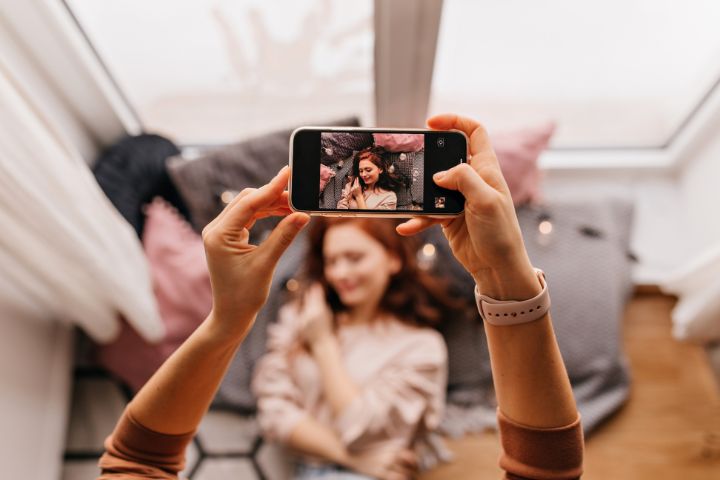Tips To Take Better Photographs With Your Mobile

Mobile photography is at one of its peak points. For years, mobile phone manufacturers have been putting a lot of effort into their cameras. In the golden age of Nokia, there was the megapixel war, which brought mobile phones with small screens and incredibly large sensors to the market (up to 41 megapixels were seen in the Nokia PureView back in 2012 when Android was not yet a standard).
Now, mobile manufacturers continue with that camera battle, although they no longer focus on the size of the sensor. Although you can still see sensors of gigantic sizes (more than 20 MP), now the battle focuses on the highest quality of the device’s optics, as well as a fight over who mounts more sensors on the device.
With the appearance of the dual camera, many manufacturers decided to bet on it to be able to add portrait mode. Now, we are beginning to see other devices with three cameras on the back, as well as some that opt for a dual front camera for selfies.
Considering all this progress in mobile cameras, now everyone has started using their smartphones as if they were digital cameras. And while they can do the job, as with digital cameras, if you want to take good photographs, there are some things to keep in mind.
Today, we give you some tips to take better photographs with your mobile so you can share them on Instagram or your other social networks or simply save memories of the places you go.
Light is everything
Yes, light is everything. Not only when it comes to night photography (where mobile devices falter the most), but to be able to get a decent photo. If you want to go from taking good photos to capturing incredible photos, controlling the light is essential.
When taking photographs, you have to take many elements into account, not just direct light. You have to look at the light reflections from nearby buildings. The best way to start mastering the light and also to get good photographs is to try sunrise or sunset light, which offers a very striking tone.
Remember that your mobile has some parameters that you can edit manually. Feel free to dip into your camera settings; it will help you have greater control of the photographs you take.
Remember that cell phones are not the best when it comes to low-light scenes, so if you are not sure, do not try to photograph anything or anyone if there is no decent light. Not at least if you want to get good quality results.
Zoom? You better get closer to your goal.
Huge sensors and increasing quality. There will be no problem zooming in a little to capture a slightly wider angle. But you’re mistaken. Using digital zoom will affect the quality of the image in the same way that ‘shaking’ will have more of an effect on it.
If you want to zoom in on something, the best thing you can do is use your legs. Move closer to the object you want to zoom in on; this is the best way to get a closer image without losing image quality.
Of course, there are always exceptions. It depends a lot on the quality of the optics, as well as the software, lighting conditions and so on. However, it is always advisable to avoid zooming on your phone when taking photographs with it.
Stability, stability, stability
There are those who have a pulse worthy of a surgeon, but many others have weak pulses, so their hands move too much. This is transmitted by the fact that the photos taken with the Smartphone are blurry.
In the middle of 2018, with the cameras that some mobile phones have and with optical stability, it is almost unthinkable for a photo to turn out blurry unless it is done on purpose. But, despite being rare, there are still stability problems when you do not have a top-of-the-range device or when photographing a moving object.
- Hold your device horizontally. In addition to offering you a larger image, it offers better grip and greater stability.
- Try burst mode if you want to take photos of moving objects. If you have decent stability, some of the photos will be of sufficient quality.
- Keep in mind how you are going to shoot the image to prepare beforehand. Whether you are going to use the touch screen button or one of the physical buttons intended for capture, you can be prepared in advance for the movement that will be produced by said action.
It’s all about the angles…
Look at everything from a different perspective. Traditional angles, in addition to being already well-worn, may not be the best for certain captures. Try other angles to modify the result you get from a photograph.
Feel free to get down to the ground, climb a tree, or move to the side of the object so you can try new positions in the composition. Try all the angles you can with your subject, but don’t leave aside that initial angle because, if the others fail, it could be your best option.
A clean lens is a happy lens.
A pretty simple rule that not everyone seems to follow is to clean your camera lens. It’s not something to consider on DSLR cameras; it happens on all cameras, even mobile devices.
When a lens is not clean, spots, blurs, and even flares or deformations appear in the light it receives. Some use this to be able to take artistic photographs or give interesting effects to their images. However, these people have total control of the situation since they are the ones who generate said ‘dirt’ on the lens. If it is simply dirty, remember to take a microfiber cloth and clean it.
Quality and quantity
When talking about captures, the quality of the images must always prevail. Badly taken photographs are of no use and never take composition or lighting into account. Therefore, it is important to take into account the different aspects before shooting to obtain a quality image.
However, we are no longer in the age of film cameras. Now, in the digital age, you can take as many photos as you want without worrying about one going wrong. Don’t worry about the number of photographs. If you want to take a couple more shots, take them. The inspiration or change of light your image needs to become an extraordinary photo may come.
Use the apps
Whether you are an Android or iPhone user, both operating systems have numerous applications in their respective stores. Among them, you can see many photography apps.
From alternative cameras to those that come with the devices, as well as editors of all kinds, some applications can change your photographs. Take a look at the different app offerings available in the app stores. Also, ask friends or professionals for recommendations; they could give you a hand.
Also Read : The King Of Photography Returns To The Throne – Huawei P50 Pro Review.


